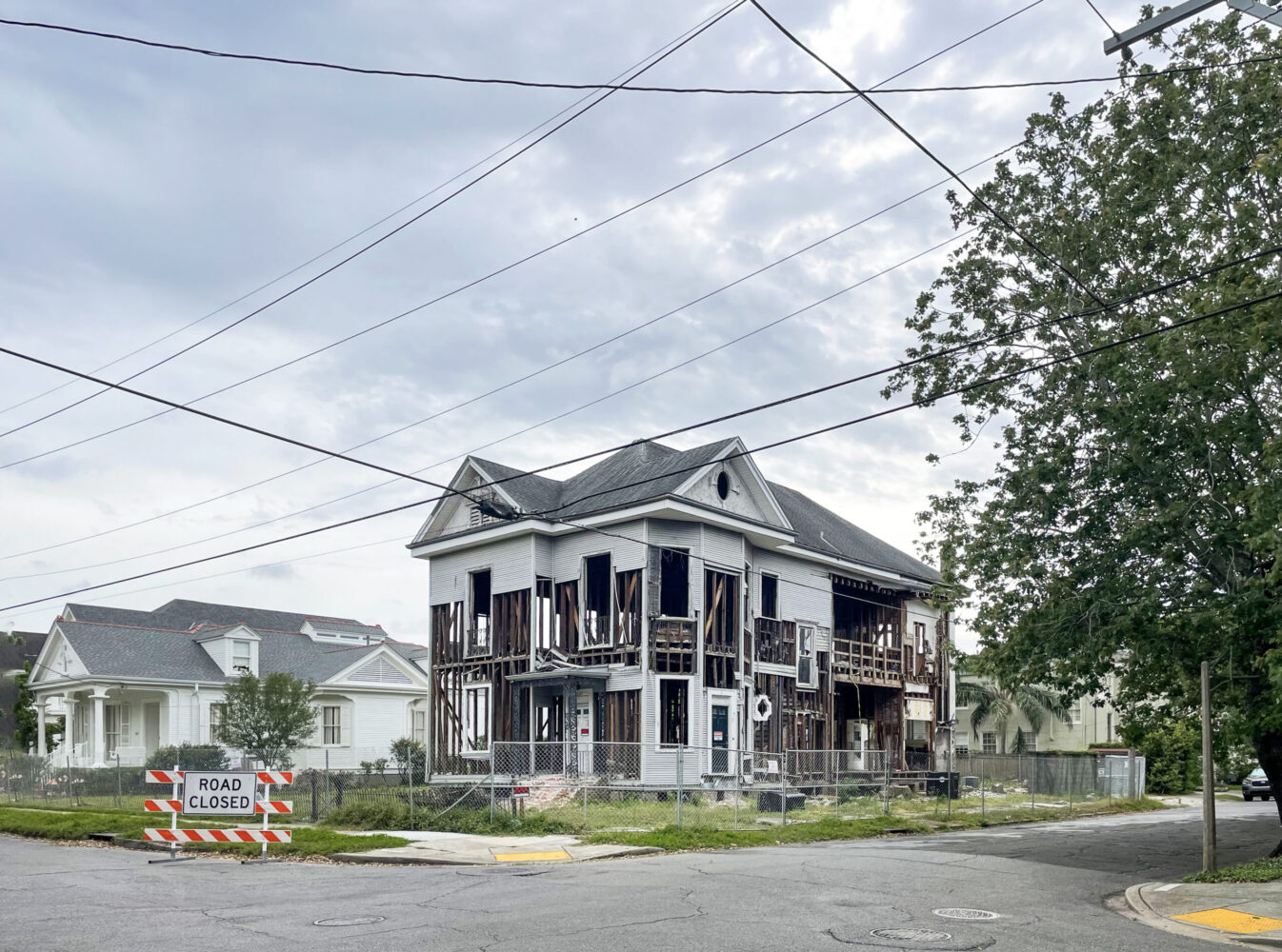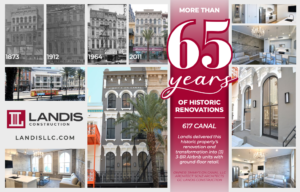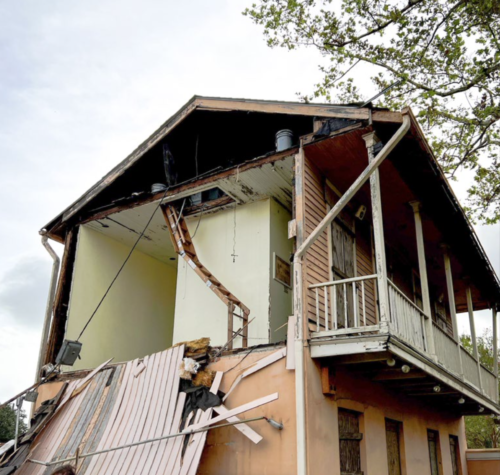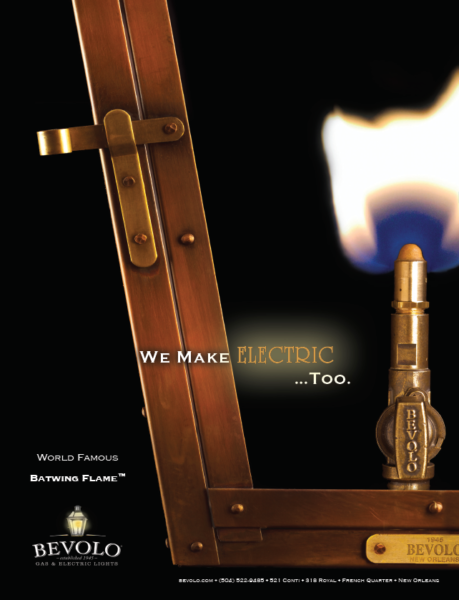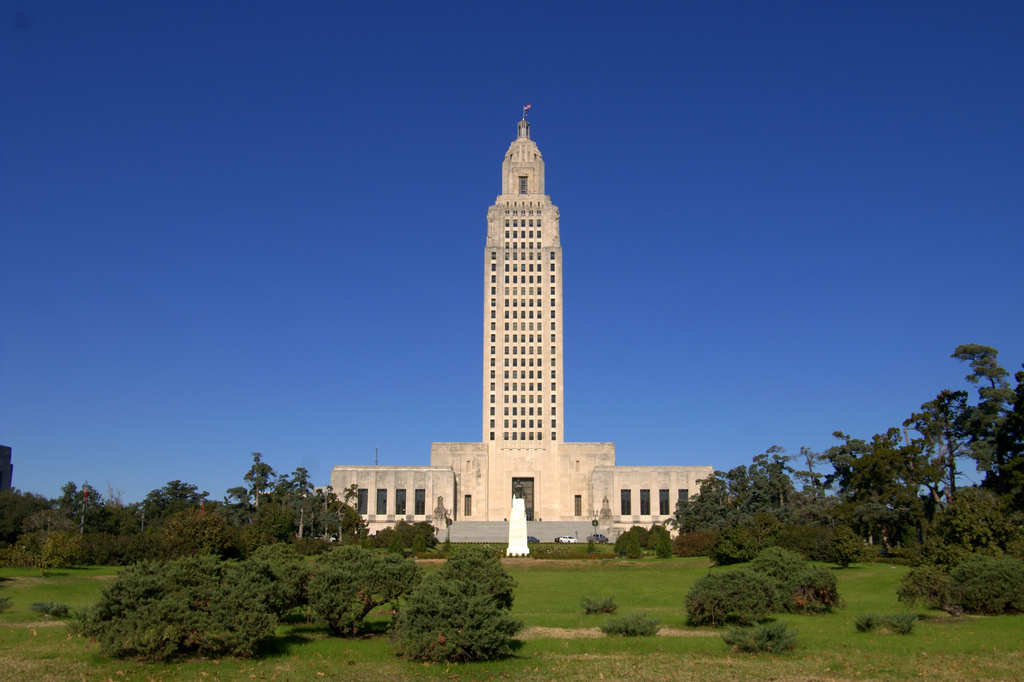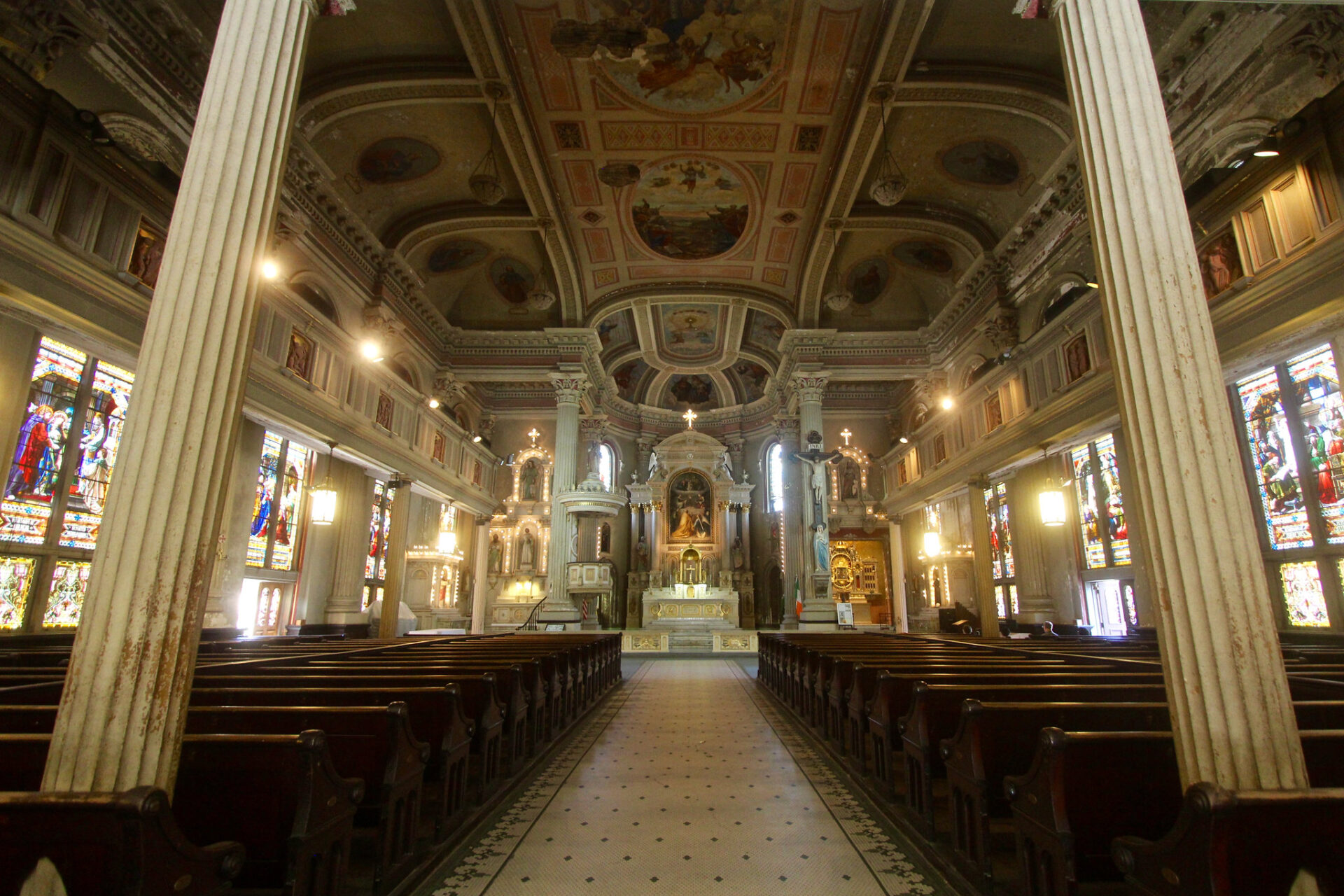This story appeared in the May issue of PRC’s Preservation in Print magazine. Interested in getting more preservation stories like this delivered to your door nine times a year? Become a member of the PRC for a subscription!
Editor’s note: The New Orleans Historic District Landmarks Commission denied a full demolition request for 1230 Webster St. at its May meeting. The owner has the right to appeal the ruling to the New Orleans City Council.
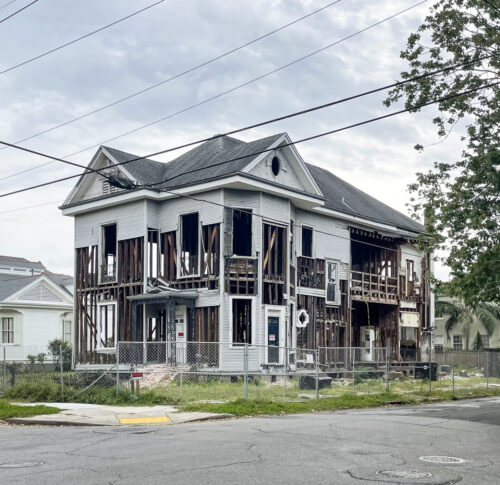 Update! On May 16, the Louisiana House of Representatives swiftly voted to pass HB 193, a bill that more than doubles the penalty for unpermitted demolition of a designated historic building in New Orleans. The vote was 92-1 in favor. The bill now heads to the Senate, which must also approve the change. A big thank-you to the bill’s patron Rep. Aimee Freeman and the City of New Orleans as well as our preservation colleagues who recognized the need to modernize the law.
Update! On May 16, the Louisiana House of Representatives swiftly voted to pass HB 193, a bill that more than doubles the penalty for unpermitted demolition of a designated historic building in New Orleans. The vote was 92-1 in favor. The bill now heads to the Senate, which must also approve the change. A big thank-you to the bill’s patron Rep. Aimee Freeman and the City of New Orleans as well as our preservation colleagues who recognized the need to modernize the law.
As the Louisiana Legislature is poised to consider House Bill 193 that would increase the maximum penalty for illegal demolition in New Orleans’ historic districts, the case of 1230 Webster St. illustrates the need for such reform. HB 193, submitted by Rep. Aimee Freeman, D-New Orleans, was developed with research conducted by the Preservation Resource Center and the Historic District Landmarks Commission.
In August 2020, the New Orleans HDLC denied a certificate of appropriateness for a request to demolish 1230 Webster St., an altered Queen Anne-style home. A staff inspector found that despite cracked plaster, mold and some termite damage, the structure was in overall fair condition, with its foundation piers, attic and roof deemed to be in good condition. An attorney representing the property owner appealed the decision to the New Orleans City Council without success. A summary of the commission’s reasoning prepared by HDLC staff cited the home’s 1904 building contract (for $6,600) and an active real estate listing (marked “Status: Pending”) with images showcasing hardwood floors, pocket doors and historic windows. PRC argued that full demolition was unwarranted and instead that non-original additions could be removed as part of a thoughtful restoration.
Perhaps because they viewed the neglected property as an eyesore or because they hoped a lavish replacement would buoy property values, 15 area residents submitted letters of support for the demolition request. Thirteen of these were identical form letters, and the other two clearly indicate they were solicited by a real estate firm. The letters refer to “a drawing/elevation provided to me” of a “lovely new home” and give the name of a prospective buyer. The demolition denial did not scuttle the sale. The house, located on a large lot at the corner of Prytania Street, was sold in December 2020 for $1,595,000.
An architect hired by the new owner requested and received approval for the removal of non-historic accretions as part of a structural renovation permit in July 2021. Drawings submitted with the permit application state that 80 percent of the existing facade was to remain untouched. A November 2021 inspection revealed that workers far exceeded the permitted scope of demolition by removing historic windows, doors and weatherboards. The city’s Department of Safety and Permits issued a stop-work order, and the owner appeared before the HDLC in February 2022. Rather than dispute the violation, he attributed it to an overzealous contractor and explained that as an out-of-town owner looking to relocate to New Orleans, he was limited in his ability to supervise the work. This time, area residents submitted letters to HDLC decrying the loss of historic character in the neighborhood. The commission opted to levy a $10,000 fine — the most allowed by state law for demolition without a certificate of appropriateness — accompanied by a retention of demolition permit, which is essentially a concession that the historic materials have been lost and cannot be retrieved.
The owner paid the fine (which amounted to 0.006 percent of the property’s sale price). In March 2022, his architect submitted plans for a structural renovation calling for additional demolition. If carried out, the plans would result in a remodeled structure containing only 23 percent of the original roof, 46 percent of the Webster Street facade and 14 percent of the total exterior. A sketch included in the drawings shows a completed Italianate home bearing almost no resemblance to its predecessor. The application was accompanied by the report of a structural engineer hired by the owner; it states that a visual inspection revealed that the property is structurally unstable due to the excessive removal of building components that triggered a fine.
Correspondence obtained by PRC in April 2022 indicated that a new owner’s representative asked the city Department of Code Enforcement and HDLC to inspect the building and evaluate whether it was in imminent danger of collapse, a status that triggers demolition without requiring a certificate of appropriateness. As of this writing (in mid-April), HDLC’s senior management has noted strong reservations to such a determination and insisted that the matter come before the commission because of the property’s fraught track record. Neighbors will be understandably concerned by the building’s exposed and compromised condition, but with the proposed redevelopment plan far exceeding demolition guidelines set by the HDLC, there is no clear path forward. Temporary shoring and stabilization are feasible in the interim, but preservationists fear that a recalcitrant owner may prefer that the structure collapse in a strong wind (a scenario that played out at 1006 Milan St. in 2020, resulting in another de minimis fine and two new construction homes valued at more than $1 million each.)
Whatever becomes of the property at Webster and Prytania, its saga illustrates peculiarities of the New Orleans real estate market that make the reforms in HB 193 necessary. In the context of a multimillion-dollar development, be it for a personal residence, resale or commercial use, the $10,000 maximum fine established by a 1979 state law is hardly sufficient deterrence from side-stepping the process for obtaining permits, as laid out in the same chapter of state code. In short, penalties have become the cost of doing business. When historic fabric is irreparably lost, the city is faced with a false choice: to levy an insufficient fine or leave the neighborhood facing a disassembled and dangerous eyesore.
What HB 193 will do if passed is raise the maximum fine for demolition without a certificate of appropriateness in Orleans Parish to $25,000 or 15 percent of a structure’s assessed value, whichever is greater. (The 15 percent formula aligns with a calculation that is already used in other portions of the city subject to the National Register Demolition Review District.) The minimum allowable fine would remain at $1,000, and all judgements would remain subject to appeal first to the City Council and then to the courts. If successful, this change to state law will prompt people to think twice before ignoring or sidestepping the permit process in New Orleans historic districts.
Advertisement
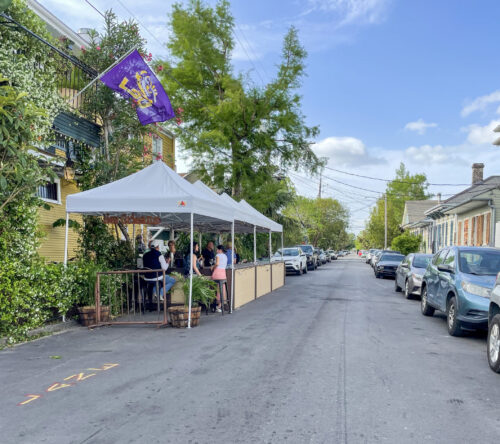 At the onset of the COVID 19 pandemic, cities worldwide scrambled to find ways for cultural and culinary enterprises to persist in spite of masking and social distancing mandates. Many cities embraced outdoor dining and performances, some even closing streets to automobiles to accommodate al fresco experiences. (Outdoor exercise was another common rationale for street closures in the United States.)
At the onset of the COVID 19 pandemic, cities worldwide scrambled to find ways for cultural and culinary enterprises to persist in spite of masking and social distancing mandates. Many cities embraced outdoor dining and performances, some even closing streets to automobiles to accommodate al fresco experiences. (Outdoor exercise was another common rationale for street closures in the United States.)
Although the administration of Mayor LaToya Cantrell capitulated when its proposal to transform a portion of Orleans Avenue in the French Quarter into a pedestrian mall met with stiff resistance, New Orleans did institute a “parklet” program that allows restaurants to transform parking lanes into outdoor cafe seating and issued special event permits for outdoor musical performances.
To promote the parklet program, the city waived permit fees for applicants. In response to these new options, some proprietors hedged their bets, keeping staff sizes lean and furnishings minimal. Others went all in, building light-strewn pergolas and investing in weather-ready furniture.
Among the businesses that embraced outdoor entertainment was the Broad Theater, which opened its Broadside venue outdoors to host film screenings and live musical performances. The venue secured permanent legal status in January 2022, after a zoning process granted the location a conditional use. There are a smattering of houses and apartments near the property, which abuts the Lafitte Greenway and has a history of industrial use, including as a junkyard.
Most outdoor dining entertainment venues that sprung up during the pandemic, however, now find themselves in legal limbo. With pandemic restrictions loosening, restaurants, venues and neighbors are looking to the City Planning Commission and City Council for guidance on what the future holds. For parklets and outdoor venues to become permanent fixtures of the city, the temporary permits and exemptions granted with mayoral authority during a state of emergency will need to be replaced with a more permanent framework.
In two separate motions, the City Council has initiated the process for making text amendments to the Comprehensive Zoning Ordinance that would create a new temporary use category of parklets and implement recommendations from the Planning Commission’s 2019 Outdoor Live Entertainment Study. As of this writing, the commission has not yet held the requisite public hearings or released draft text of any CZO amendments.
Not everyone is on board. Many residents of the city’s most-visited historic neighborhoods warn that in the absence of adequate enforcement, parklets transform into outdoor bars, and boisterous music keeps neighbors up well into the night. On its website, the Vieux Carré Property Owners, Residents and Associates organization offered “nine reasons to end the parklet program.” Among the reasons are: “They are no longer necessary,” noise impacts and “privatization of public space.”
Why can visions of Parisienne sidewalk cafes quickly devolve into the reality of Bourbon Street? Partly the reason is spatial: Sidewalks can be too narrow to accommodate tables and passers-by without forcing someone into the street. But largely it is cultural: The expectations and aspirations of would-be revelers who arrive in the Crescent City primed to party by a long tradition of marketing decadence in the City that Care Forgot.
Despite their pitfalls, streetside parklets offer the advantage of full visibility from the right of way. Outdoor live music at bars and restaurants frequently takes place in rear yards and courtyards, where it may be more bothersome to adjacent neighbors than passers-by on the sidewalk out front. The prospect of citywide changes implicates the many corridors where dining and drinking establishments thread through residential neighborhoods, such as Maple, Freret and Magazine streets.
How then should preservationist respond? PRC’s mission calls on us to preserve both New Orleans’ neighborhoods and its unique cultural identity, which surely includes rich food, musical and artistic traditions. It starts with blurring the line between false dichotomies. In a word: balance.
New Orleans, a city of less than a half million people, welcomed a record-breaking 19.75 million visitors in 2019. After tourism plummeted in 2020, hospitality businesses struggled to make sense of conflicting and fast-changing guidance on safe reopening. As the pandemic recedes and the industry rebounds, residents, restaurants and venues deserve clear guidelines — and reliable, impartial enforcement — for the new normal.
In addition to working with diverse stakeholders to find consensus around CZO amendments, PRC will continue to support the establishment of an Office of Nighttime Economy to be on call when other city agencies are closed, and development of a fair noise ordinance to replace the unenforceable one still on the books.
Even our most colorful culture bearers need a good night’s sleep.
Advertisement
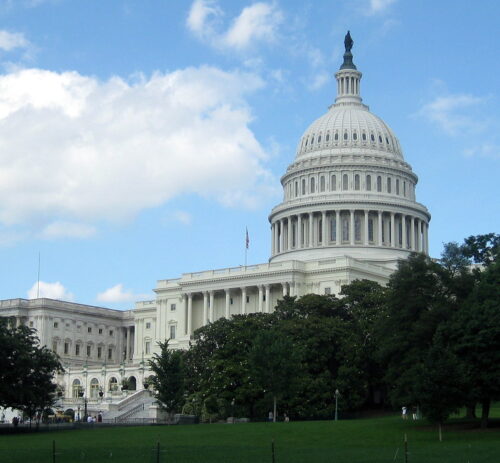 For the second year in a row, the Preservation Resource Center joined with colleagues from Preserve Louisiana, the Louisiana Trust for Historic Preservation and the Louisiana Department of Culture Recreation and Tourism for virtual meetings with members of Louisiana’s congressional delegation and their staff. The group, which met in March, discussed the importance of federal investments in historic preservation to Louisiana. Concurrently, preservationists in other states held meetings of their own as part of a nationwide Advocacy Week coordinated by Preservation Action with assistance from the National Trust for Historic Preservation and the National Council of State Historic Preservation Officers.
For the second year in a row, the Preservation Resource Center joined with colleagues from Preserve Louisiana, the Louisiana Trust for Historic Preservation and the Louisiana Department of Culture Recreation and Tourism for virtual meetings with members of Louisiana’s congressional delegation and their staff. The group, which met in March, discussed the importance of federal investments in historic preservation to Louisiana. Concurrently, preservationists in other states held meetings of their own as part of a nationwide Advocacy Week coordinated by Preservation Action with assistance from the National Trust for Historic Preservation and the National Council of State Historic Preservation Officers.
Topping the list of preservation priorities was a $200 million allocation to the Historic Preservation Fund for fiscal year 2023. Nearly half of that amount would provide staff support to state and tribal historic preservation offices, which is particularly important now as those SHPOs and THPOs carry out the required reviews associated with federally funded infrastructure projects. The remainder would flow to cities and nonprofits via grant programs for physical preservation projects, including Save America’s Treasures and Historically Black Colleges and University grants, and for surveys and research to enhance the National Register of Historic Places. The $200 million target represents a substantial increase over the $173 million allocated for 2022 and $144 million in 2021.
The Louisiana cohort also underscored the value of the federal historic rehabilitation tax credit, which created or sustained more than 4,700 construction jobs in Louisiana last year, according to the Department of Culture, Recreation and Tourism. The vast majority (more than 4,000 jobs) were in Congressional District 2, where New Orleans is located. Louisiana’s senior senator, U.S. Sen. Bill Cassidy, a longtime supporter of the program, is co-patron of a bill to make that federal credit available to more projects and enhance its value for investors. Congressional staff advised the group that the next serious opportunity to pass such legislation may come after fall elections, when several tax policies will be evaluated for renewal at the year’s end.
New this year, the group discussed a legislative proposal to establish a grant program for the identification and preservation of African American cemeteries. With bipartisan patrons in both the House and Senate, the African American Burial Grounds Preservation Act would establish a $3 million grant program administered by the National Park Service. It’s a concept that could greatly benefit Louisiana. For example, Lafayette Cemetery No. 2 is believed to have the largest collection of African American society tombs remaining in New Orleans. With the benevolent societies that created them no longer functioning, many are in need of repair and maintenance.
Advertisement
Seven months after Hurricane Ida tore through Southeast Louisiana, damage from the storm lingers in Louis Armstrong Park. The Preservation Resource Center has entered discussions with the city to assist in temporary stabilization of the 19th-century buildings in the park before the 2022 hurricane season commences. Members of the PRC Technical Services Committee conducted site visits last year, yielding an engineer’s report (courtesy: PACE Group LLC) and scope of work. The PRC Board of Directors agreed to underwrite the stabilization costs after the city’s Department of Property Management confirmed that no public funds were immediately available for the work.
When Louis Armstrong Park was being developed in the late 1970s, two historic buildings (the Rabassa-DePuilly House and the Riemann House) were relocated near Perseverance Hall No. 4 to create a walled cluster of historic buildings. Built in 1820 as a Masonic Lodge for Creoles of Color, the hall played host to early jazz performers, including Sydney Bechet. Its kitchen dependency, constructed around 1830, extended that tradition by serving as radio station WWOZ’s “Treehouse Studio” for 25 years starting in 1980, the year the park opened.
Each structure sustained minor damage — missing weatherboards, broken windows — but the Kitchen Building fared the worst. When a large window shattered, high winds raced through the building, blowing open a portion of the wall. That wall section remains collapsed in the courtyard, leaving the second story and attic exposed to the elements. Visible termite damage may have contributed to the vulnerability of the long-vacant building.
An active bee colony within the building has also complicated matters. As of this writing, Trine Builders, LLC, has agreed to serve as contractor for the stabilization, and PRC staff are coordinating with an experienced beekeeper to humanely relocate the colony to an apiary before stabilization work can commence.
The city documented storm-related damage to the buildings and submitted the information to FEMA just as it did for other public buildings. The process for federal review can move slowly, with no guarantee of compensation for months, if not years, to come, after which time the city’s own procurement rules make swift action a relative concept. PRC’s offer to assist will not fully restore the building but is intended to forestall additional damage in the interim.
PRC will continue to advocate for the substantial investment needed to fully restore and reopen the complex as part of a vibrant and renewed Louis Armstrong Park. A broad coalition known as Save our Soul cemented opposition to a now-scuttled proposal to place City Hall within the nearby Municipal Auditorium. The group is now advocating for a community-driven revitalization of the park in which these historic structures should surely play a role.
Nathan Lott is PRC’s Policy Research Director and Advocacy Coordinator.
Advertisements




